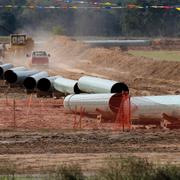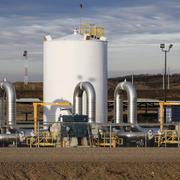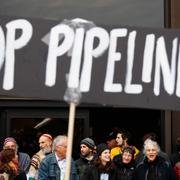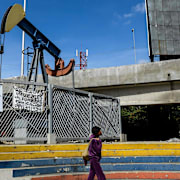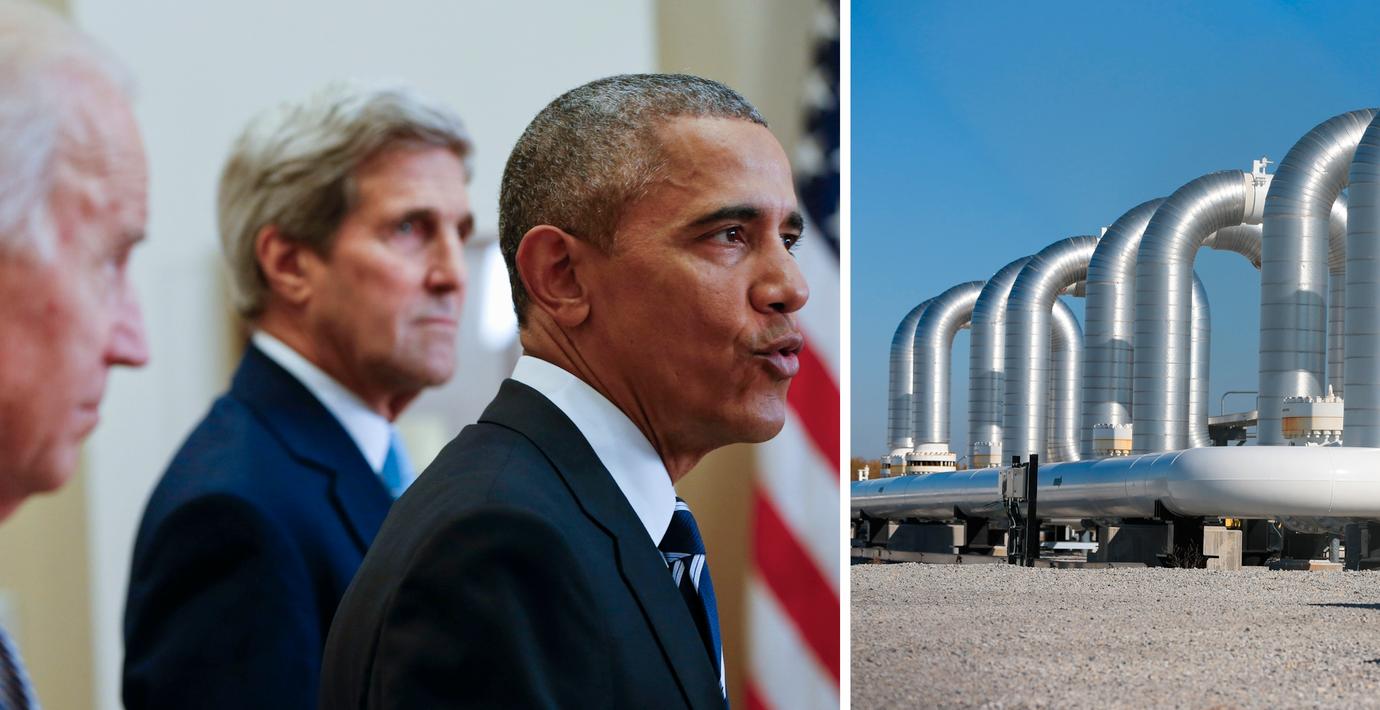
Obama stoppar omstridd jättepipeline
USA:s president meddelade i dag att han stoppar den omstridda oljeledningen Keystone XL, tänkt att gå från Kanada till Mexikanska golfen.
Barack Obama hänvisade till att oljepriset har sjunkit och att en pipeline inte skulle vara försvarbar om USA ska vara ledande i miljöarbetet. Keystone XL ”skulle inte tjäna USA:s intressen eller betyda långsiktig, betydelsefull ekonomisk tillväxt”, sa han.
Personer som är positiva till ledningen hävdar att den både skulle skapa arbetstillfällen och öka USA:s energioberoende. De som motsätter sig projektet menar att det skulle orsaka stora utsläpp av växthusgaser.
bakgrund
Keystone XL
Wikipedia (en)
The Keystone Pipeline System is an oil pipeline system in Canada and the United States, commissioned since 2010.
It runs from the Western Canadian Sedimentary Basin in Alberta to refineries in Illinois and Texas, and also to oil tank farms and oil pipeline distribution center in Cushing, Oklahoma.
Three phases of the project are in operation, and the fourth is awaiting U.S. government approval. They are:
The Keystone Pipeline (Phase I), delivering oil from Hardisty, Alberta 480-kilometers (300 mi) to the junction at Steele City, Nebraska and on to Wood River Refinery in Roxana, Illinois and Patoka Oil Terminal Hub (tank farm) north of Patoka, Illinois, completed in June 2010.
The Keystone-Cushing extension (Phase II), running 480 kilometres (300 mi) from Steele City to storage and distribution facilities (tank farm) at Cushing, Oklahoma, completed in February 2011.
The Gulf Coast Extension (Phase III), running 784 kilometres (487 mi) from Cushing to refineries at Port Arthur, Texas was completed in January 2014, and a lateral pipeline to refineries at Houston, Texas and a terminal will be completed late 2015, going online a year later.
The proposed Keystone XL Pipeline (Phase IV), which would essentially duplicate the Phase I pipeline between Hardisty, Alberta, and Steele City, Nebraska, with a shorter route and a larger-diameter pipe. It would run through Baker, Montana, where American-produced light crude oil from the Williston Basin (Bakken formation) of Montana and North Dakota would be added to the Keystone's current throughput of synthetic crude oil (syncrude) and diluted bitumen (dilbit) from the oil sands of Canada.
The first two phases have the capacity to deliver up to 590,000 barrels per day (94,000 m3/d) of oil into the Mid-West refineries. Phase III has capacity to deliver up to 700,000 barrels per day (110,000 m3/d) to the Texas refineries. By comparison, U.S. oil production was about 9,000,000 barrels per day (1,400,000 m3/d) in early November, 2014; and in the preceding twelve months through August 2014, the US imported an average of about 7.5 million barrels of oil per day.
The Keystone XL proposal faces criticism from environmentalists and a minority of the members of the United States Congress. In January 2012, President Barack Obama rejected the application amid protests about the pipeline's impact on Nebraska's environmentally sensitive Sand Hills region. TransCanada Corporation changed the original proposed route of Keystone XL to minimize "disturbance of land, water resources and special areas"; the new route was approved by Nebraska Governor Dave Heineman in January 2013. On April 18, 2014 the Obama administration announced that the review of the controversial Keystone XL oil pipeline has been extended indefinitely, pending the result of a legal challenge to a Nebraska pipeline siting law that could change the route. On January 9, 2015, the Nebraska Supreme Court cleared the way for construction, and on the same day the House voted in favor of the pipeline. As of January 29, 2015. the Keystone XL Pipeline has been passed by the Senate 62-36. As of February 11, 2015. the Keystone XL Pipeline has been passed by the House of Representatives with the proposed Senate Amendments 270-152. The Keystone XL Pipeline bill was not officially sent to President Obama, starting the official ten-day count towards the bill becoming law without presidential signature, until February 24, 2015. Republicans delayed delivering the bill over the Presidents Day holiday weekend to ensure Congress would be in session if the president were to veto the bill. On February 24, 2015, the bill was vetoed and returned for congressional action. On March 4, 2015, the Senate held a vote and failed to override President Obama’s veto of the bill; the vote was 62 to 37, and failed to reach the two-thirds majority required to override a presidential veto. The review by the State Department is ongoing. On June 15, 2015 the House Oversight Committee threatened to subpoena the State Department for the latter's withholding of records relevant to the process since March 2015 and calling the process "unnecessarily secretive". Despite some records being posted by consulted agencies such as the EPA, the State Department has not responded to the request. On November 2, 2015, TransCanada asked the Obama administration to suspend its permit application for the Keystone XL.
Omni är politiskt obundna och oberoende. Vi strävar efter att ge fler perspektiv på nyheterna. Har du frågor eller synpunkter kring vår rapportering? Kontakta redaktionen
